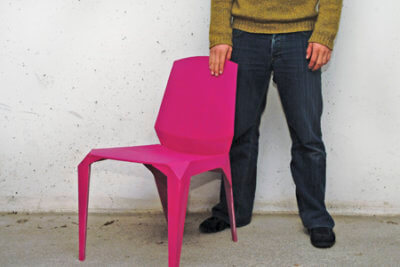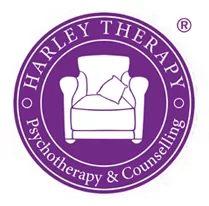What is Gestalt Therapy?

By: Khánh Hmoong
Gestalt therapy is quite unique in the field of psychotherapy. It is more about experiencing than analysing, and more about the present moment than your past.
By no means a newcomer, gestalt therapy was developed as far back as the 1940s, and was very popular in the 60s and 70s. It is now enjoying a renaissance as new research begins to show the effectiveness of many of gestalt’s core concepts.
What is Gestalt Therapy?
What if you are actually seeing your entire life, and yourself, through a smokescreen of past experiences, negative thoughts, and perspectives that aren’t even your own?
“Gestalt” is a German word that has many meanings, one of which is whole. Gestalt therapy is a form of psychotherapy that aims to return you to wholeness and to your full potential by removing the blocks to your self-awareness.
It does this by creating experiences in the therapy room that bring you out of the past and your negative thoughts, and into the present moment and your true feelings, thoughts and actions.

By: gisele13
Usually placed under the humanistic approach, gestalt psychotherapy can and often is used alongside other forms of therapy, including integrative psychotherapy and art or dance therapy.
The goals of gestalt therapy
Gestalt therapy aims to help you achieve the following:
- understand what is going on in your life right now
- recognise what your real thoughts and feelings are versus what you tell yourself to believe
- recognise how your negative thought patterns are blocking you from knowing yourself
- understand your behaviours and how they make you unhappy
- recognise and work towards your potential
- feel more self aware and take personal responsibility
- feel integrated and whole
- learn to get your needs met while still respecting the needs of others
- find solutions for present-day problems.
How is Gestalt Therapy different than other forms of psychotherapy?

By: Suus Wansink
So how does gestalt compare to other sorts of therapy?
1. It is present-moment based.
When gestalt therapy was originally created, psychoanalytical therapy was still in its heyday, with its belief we heal by going to the past and what we then felt.
Gestalt therapy came along and instead asked, ‘how do you feel in this exact moment?’.
Gestalt therapy suggests we heal the past by bringing it into the present. To find freedom from old pain and anger, we need to feel those feelings now.
Today, with the rise of mindfulness and MBCT, more and more therapists integrate present-moment awareness, and hundreds of studies around mindfulness now show that present-moment awareness is effective at treating psychological issues that range from depression to PTSD and ADHD.
2. Your therapist is in partnership with you.
Like schema therapy, person-centred therapy, and cognitive analytic therapy, gestalt moves away from the therapist/patient model. A gestalt therapist is by no way there to try to change you, but merely to facilitate your growth of self-awareness.
3. It is experiential.
Many talk therapies focus around, well, talking.
Gestalt therapy does of course involve dialogue. But it is dialogue that arises from what you are currently experiencing – the focus is on the direct experience you have in the therapy room.
While some therapies see you talking about how you felt and thought a few days, months, or even years ago, in a gestalt session you’ll do ‘exercises and experiments’ with your therapist that have you engaging with how you are thinking, feeling and behaving right now.
You might still approach your past experiences, but with a lens of present-moment experience, such as by acting something out. Or you might even find yourself talking to different, past parts of yourself… see the chair method in the next section.
Important concepts of gestalt therapy
In order to best understand gestalt therapy, it helps to understand the ideas that drive it. Here are some of the main ones:
We are not made up of separate parts. Remember, ‘gestalt’ refers to wholeness. Gestalt thearpy does not see as us a mind vs body, body vs soul, or even as either thinking or feeling. It believes we work as a whole, and focuses less on differentiating ‘parts’ of someone and more on the way our whole being responds to the environments around it.
We also aren’t separate from what’s around us. Just as we are not made up of separate pieces, we also cannot deny the influence of the environments we live in and the people around us we relate with.
To be healthy and happy, we need to be aware. If our esteem is too low to trust ourselves, or we are blinded by past experiences and fantasies, we stand very little chance of being able to choose and change our responses and environments.
To be aware, we need to be present. If we are always worrying about the past or future we can’t be conscious of our real thoughts and feelings.
Responsibility is key. Blaming others leaves us powerless. We need to learn how to get our needs met while still respecting the needs of others and take charge of our choices.
Gestalt Therapy Methods
So what are some of the methods that Gestalt Therapy uses to help you experience yourself fully, in the now moment?

By: Uwe Strasser
The empty chair technique.
If you are at all into self development, you might have heard of ‘the chair method’ at some point. It’s been borrowed by many coaches, but actually comes from gestalt therapy.
You are asked to imagine yourself, or parts of yourself, on an empty chair sitting across from you, and communicate with this other part. You then switch chairs, and communicate to yourself from the role of the other part.
Role-play.
For example, if you have a big interview you are scared about, you could practise what it might be like.
Dreamwork.
Instead of analysing dreams for unconscious meaning like psychoanalysis, gestalt therapy sees dreams as a chance for further self-awareness. You might ole-play things from your dreams, or ‘talk to’ different characters or objects from your dreams, and see what you think and feel doing so.
Body language.
Not quite a technique per se, but an important part of gestalt therapy is observation of all the ways you are in the present moment and what that might mean for you. Gestalt therapists will often observe and bring into the dialogue your body language. “I noticed you keep rubbing your fingers as you speak, what would your fingers say if they could talk?”
What can gestalt therapy help you with?
- anxiety
- depression
- self-esteem
- relationship difficulties
- physical pain (headaches, back pain).
Would you like to try Gestalt therapy, or work with an integrative therapist using integrative techniques? Harley Therapy now connects you with therapists across the UK and worldwide via online.
 Andrea M. Darcy is a mental health and wellbeing expert and writer. She also runs a consultancy helping people find their perfect therapy and therapist, and is a huge fan of the Gestalt chair method. Follow her on Instagram for useful life tips @am_darcy
Andrea M. Darcy is a mental health and wellbeing expert and writer. She also runs a consultancy helping people find their perfect therapy and therapist, and is a huge fan of the Gestalt chair method. Follow her on Instagram for useful life tips @am_darcy





thankyou for your information its helpful and useful its very interesting too
Hey queen, where have you been all my life?
I am a multiple stroke survivor, it’s been 13 years and I still face many struggles to this day. However, fatherhood has helped me recover in many aspects of my life. I have an 8 year old son, 7 year old son, 5 year old son, and soon expecting a daughter.
I do practice mindfulness and it has helped saved me from taking medications. I just stumbled upon the Gestalt therapy through your blog. The key concepts of wholeness, awareness, being present and responsible just clicked instantly.
If you have some time to connect, so I could get some further insight, I would be in debted to you.
Thanks for your time,
Vimuththan Nantheeswarar